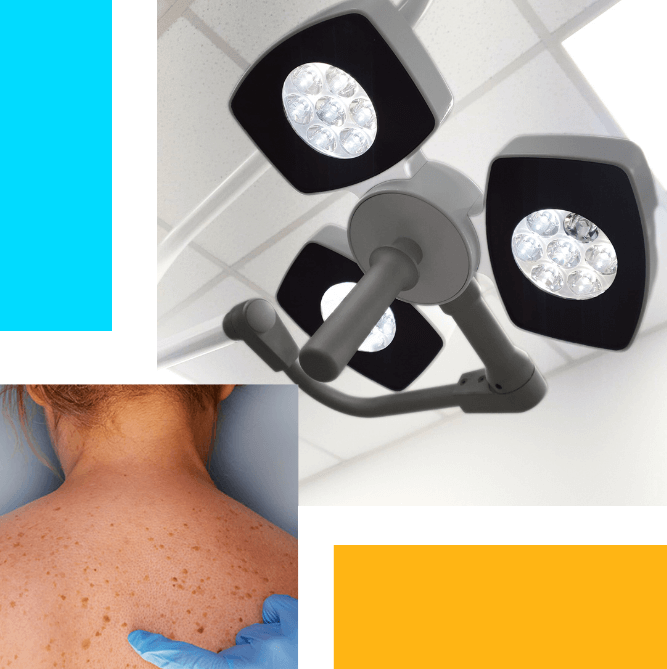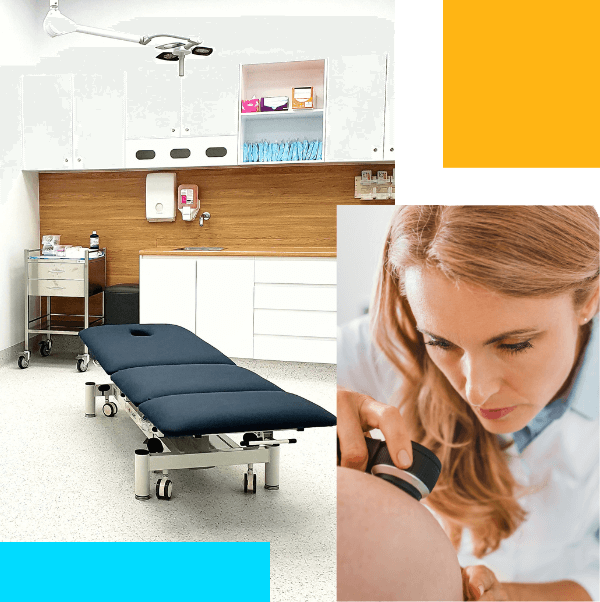
SKIN CANCER SURGERY SUNSHINE COAST
Surgical procedures for skin cancer
Surgical biopsy and excision remain the most important ways of diagnosing skin cancer and treating invasive lesions.


Surgical Procedures
The doctors practising at SunLife are continually performing procedures on all areas of the body - including face, neck and lower limbs. They take pride in the standards of their work including properly treating each skin cancer, minimising complications, and the cosmetic outcome.
When appropriate they use advanced techniques, such as skin flaps and grafts. This keeps your care in the community as much as possible, reducing the increased time and higher costs often associated with inpatient care. They also know when further care may be better for you and will discuss onward referral as needed.
Shave biopsies
Remove the upper layers of the skin and part, or all, of the lesion - leaving a graze on the skin. It is done to diagnose skin cancers but not to treat.
Punch biopsies
Remove part, or all, of a skin lesion to the full depth of skin, often needing one or two stitches (sutures) to close. Usually, it is for diagnosing but it can treat very small skin cancers.
Curettage and Cautery
A useful option for treating certain superficial skin cancers. Quick to perform and does not need sutures. It leaves a graze like a shave biopsy but may be slower healing.
Skin Ellipse Excisions
Are the most common procedures for treating invasive skin cancers. They remove the cancer, a gap around it, and a triangle top and bottom so it will close in a flat, neat line. Sounds simple? Each location needs specific care and understanding to maintain function and minimise scarring; especially in complex areas such as head, neck, lower legs, or mobile areas.
Advanced Skin Excisions
Are required when an ellipse excision will be too tight to close or will cause a poor cosmetic outcome. These techniques include skin flaps (where a flap of skin close to the removed cancer is pulled over to allow the wound to close) and skin grafts (where a piece of skin is removed from a different location on your body and used to close the wound).

What’s involved in Skin Cancer Surgery?
Removing a skin cancer begins before you come in for the excision:
- Learning about you - your medical history, medications, allergies, smoking history
- Knowing what type of cancer is being treated and what the treatment options are
- Ensuring you know what procedure is being done and why
All procedures are done in our purpose-built rooms that have been designed and fully fitted out for skin procedures. They are performed under local anaesthetic, sometimes using a technique called a nerve block. Local anaesthetic allows your procedure to be done safely and in comfort whilst avoiding trips to hospital.
Biopsies may be done at the time of your consultation but most excisions are done during a doctor's dedicated excision list. Nurse support is available, ensuring that your procedure is well organised and can be done to the best standards.
The time needed for an excision varies for each case. A standard excision is usually 30 minutes. Your doctor will give you the indicative time allocated at the time of booking.
Aftercare
Your aftercare is important to allow the wound to heal well. Your doctor and nurse will give you advice including:
- If the wound must be kept dry
- Any restrictions on your mobility
- When to change the dressing
- When to return for suture removal (usually 1-2 weeks)
If the aftercare may affect your work, please discuss this with your doctor who can help you manage this.
At SunLife, your wound care is fully managed by your doctor and nurse here at the Care Centre.
FAQ's
Questions about surgical procedures at SunLife

How to book
Here's the next steps to book your appointment:
Step 1
Book Online or phone our Care Centre to book your appointment
Step 2
What to wear? Coming from work? Wearing make-up? Get the most out of your visit and know what to expect. Read our Patient Info page so we can help you prepare.
Step 3
Once you are booked and prepared, come along to SunLife for your appointment.